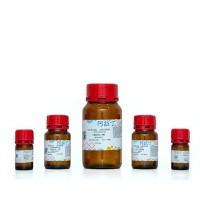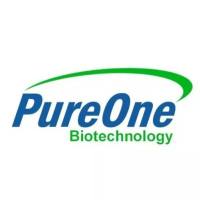|
ABSTRACT |
|
cAMP measurements are obtained using an ELISA assay (Harlow and Lane 1988). Commercial radio-immunoassays, or ELISA kits, to assay cAMP can be purchased from various manufacturers. In our laboratory we use the homemade, less-expensive ELISA that is described below. In outline, this assay is based on the ability of soluble cAMP in bacterial extracts to compete with binding of an alkaline phosphatase (AP)-conjugated anti-cAMP antibody to immobilized cAMP. The surface-bound, immobilized anti-cAMP-AP is inversely correlated to the concentration of cAMP in the extract. Known concentrations of soluble cAMP are used to calibrate the assay. |
|
|
|
MATERIALS |
|
Buffers, Solutions, and Reagents |
-
AP substrate, 5´-para-nitrophenyl phosphate (PNP)
-
BSA, 1 mg/µl in 200 mM HEPES-Na (pH 7.5)
-
BSA, 20 mg/ml in HBST buffer
-
Bovine serum albumin (BSA) at 1 mg/ml in 200 mM HEPES-NaOH (pH 7.5)
-
Coating buffer: 0.1 M Na2CO3 (pH 9.5)
-
Dimethyl formamide (DMF)
-
N-Ethoxy-carbonyl-2-ethoxy-1,2-dihydroquinoline (EEDQ)
-
HBST buffer
-
50 mM HEPES (pH 7.5)
-
150 mM NaCl
-
0.1% Tween-20
-
HEPES-NaOH, 10 mM (pH 7.5) in 100 mM NaCl
-
HEPES-NaOH, 100 mM (pH 7.5)
-
O2 ´ Monosuccinyl adenosine 3´:5´-cyclic monophosphate (O2 ´-Suc-cAMP)
|
|
Cells |
-
Bacterials strains to be assayed for cAMP (exponentially growing or overnight culture)
|
|
Antibodies |
-
Rabbit anti-cAMP antiserum
-
Goat anti-rabbit IgG coupled to alkaline phosphatase (AP)
|
|
Special Equipment |
-
ELISA plate
-
Boiling water bath or heating block, preset to 100°C
-
Incubator preset to 30°C
|
|
Additional Equipment and Reagents |
-
This procedure also requires equipment for dialysis and for the preparation of cAMP-BSA conjugate (see step 1 for details).
|
METHOD
|
-
Prepare cAMP-BSA conjugate as follows (modified from Joseph and Guesdon 1982).
-
Prepare a solution of EEDQ at 100 mg/ml in DMF (e.g., 10 mg of EEDQ into 100 µl).
-
Prepare a 60 mM solution of O2 ´-Suc-cAMP in 100 mM HEPES-NaOH (pH 7.5).
-
Incubate 500 µl of the O2 ´-Suc-cAMP solution with 75 µl of the EEDQ solution for 45 min at room temperature. Then add 500 µl of a solution of BSA at 1 mg/ml in 200 mM HEPES-Na (pH 7.5) and incubate overnight at room temperature.
-
Dialyze the mixture extensively against 10 mM HEPES-NaOH (pH 7.5), 100 mM NaCl.
-
Store the cAMP-BSA conjugate at -20°C (for several years), or at 4°C (for several weeks).
A similar cAMP conjugate was used as an immunogen to raise anti-cAMP antibodies in rabbit (Joseph and Guesdon 1982).
-
Dilute the cAMP conjugate 5,000-10,000 times (optimal dilution should be determined experimentally) in coating buffer and add 50 l of the dilution to each well of an ELISA plate. Incubate overnight at 4°C.
This will coat the ELISA plate with cAMP conjugate.
-
The next day, wash the wells of the ELISA plate with HBST buffer and add 250 µl of BSA (20 mg/ml in HBST buffer) to each well. Incubate for 1 hr at room temperature and then wash the wells with HBST buffer.
This will block nonspecific protein-binding sites.
-
Prepare the cell extracts by boiling 1 ml (in 1.5-ml microtubes) of bacterial cultures for 5 min. Then centrifuge the tubes at 13,000g for 10 min to remove the cell debris.
-
Add 100 µl/well of the boiled cell extracts (either undiluted or after serial dilutions with HBST buffer) to the cAMP-BSA-coated ELISA plate.
-
In parallel, add 100 µl of known concentration cAMP solution (concentration ranging from 0 to 3000 nM, e.g., 0, 3, 10, 30, 100, 300, 1000, 3000 nM in LB medium) to each well of the cAMP-BSA-coated ELISA plate.
-
Dilute rabbit anti-cAMP antiserum 1,000-10,000 times (optimal dilution should be determined experimentally) in HBST buffer containing 10 mg/ml BSA. Add 50 µl of the diluted antiserum to each well.
-
Incubate the plate overnight at 4°C (or for 2-3 hr at 30°C).
-
Wash the plate extensively (3 x 5 min) with 300 µl/well of HBST.
-
Dilute goat anti-rabbit IgG coupled to AP 5,000-10,000 times (optimal dilution should be determined experimentally) in HBST buffer and add 100 µl to each well of the ELISA plate. Incubate for 1 hr at 30°C.
-
Wash the plate extensively (3 x 5 min) with 300 µl per well of HBST
-
To reveal AP activity, add 100 µl of PNP substrate to each well and incubate for 20-200 min at 30°C until sufficient color develops. Measure the OD in each well at 405 nm on a microtiter plate reader.
-
For all samples corresponding to the known cAMP concentrations, plot the OD405 as a function of cAMP concentration to obtain a standard curve. If commercial data analysis/graph presentation software is available (e.g., Microsoft Excel, KaleidaGraph, SigmaPlot), it is convenient to fit the data to a sigmoid curve using the equation
OD405 = ODM x (1 - Cn / [Cn +K])
where OD405 is the OD measured for the samples containing the cAMP concentration C, and ODM the OD measured for the samples without cAMP, K the equilibrium constant, and n a cooperativity factor. These last two numbers, K and n, are defined as variables that will be fitted by the software. Note that the cooperativity factor, n, is usually close to 1 and can eventually be omitted from the equation. This equation can then be used to determine the cAMP concentration for all tested samples from the OD405 measurement.
Alternatively, approximate cAMP concentrations in the unknown samples can be deduced using a plotted standard curve and the measured OD405 readings.
|
REFERENCES
|
Harlow E. and Lane D. 1988. Antibodies: A Laboratory Manual . Cold Spring Harbor Laboratory Press, Cold Spring Harbor, New York, p. 579.
Joseph E. and Guesdon J. L. 1982. Beta-galactosidase immunoassay for the measurement of cyclic AMP. Anal. Biochem. 119 : 335-340. |
|
|
Anyone using the procedures in this protocol does so at their own risk. Cold Spring Harbor Laboratory makes no representations or warranties with respect to the material set forth in this protocol and has no liability in connection with the use of these materials. Materials used in this protocol may be considered hazardous and should be used with caution. For a full listing of cautions regarding these material, please consult:
Protein: Protein Interactions, Second Edition: A Molecular Cloning Manual , edited by Erica A. Golemis and Peter D. Adams, © 2005 by Cold Spring Harbor Laboratory Press, Cold Spring Harbor, New York, p. 513. |
|
|
|
Copyright © 2006 by Cold Spring Harbor Laboratory Press. All rights reserved. No part of these pages, either text or image may be used for any purpose other than personal use. Therefore, reproduction modification, storage in a retrieval system or retransmission, in any form or by any means, electronic, mechanical, or otherwise, for reasons other than personal use, is strictly prohibited without prior written permission. |








